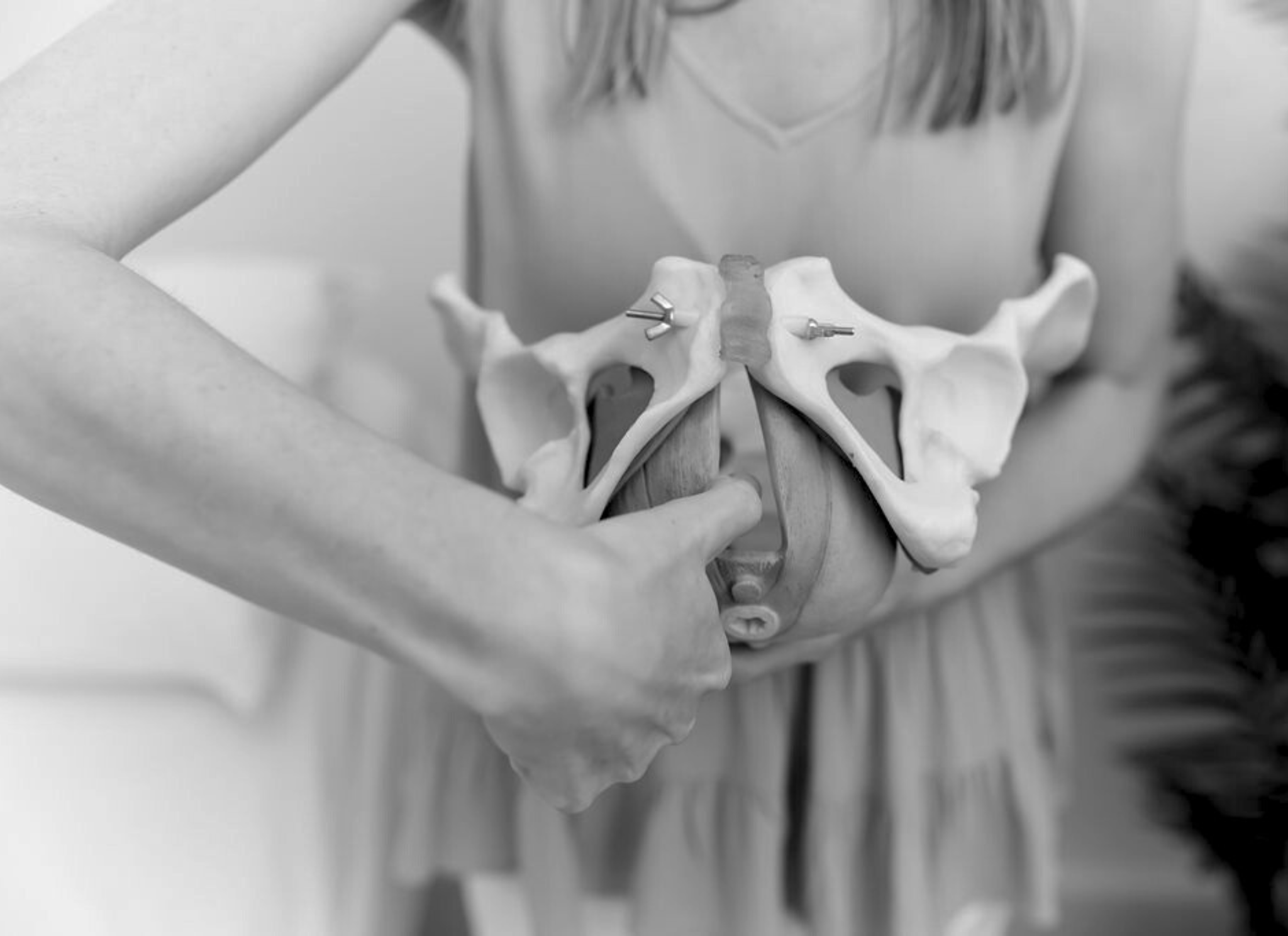Massage what?!? Perineal massage and other types of pelvic floor massage can be beneficial during pregnancy. Learn how to do perineal massage during pregnancy from a pelvic floor physical therapist!
What is perineal massage?
The perineum is the area between the vaginal opening and anal opening (aka your butthole).
Massaging the perineum during the third trimester of pregnancy may help soften the tissues and help prepare for a vaginal birth. The benefits of perineal massage are for those who want to prepare for an easier vaginal birth.
How does it help?
The benefits of perineal massage include:
- Reduced risk of severe perineal tearing during vaginal birth
- Decreased pelvic floor muscle tension
- Decreased perineal trauma or pain postpartum
- Increased sense of preparation and empowerment heading into birth
Why do it?
For pregnant mamas, there are no negative effects of perineal massage – in fact, it’s often hugely beneficial. Start at 34 weeks of pregnancy, performing 3 times per week and continue until your due date.
Perineal massage is also helpful postpartum to address scar tissue and muscle tension as the result of a perineal tear or episiotomy. Gentle massage to the area can soften the scar tissue. This can also help relax the pelvic floor muscles at the vaginal opening. Make sure to be very gentle with your pressure as these tissues are still healing and check with your medical provider before starting.
How to do perineal massage during pregnancy
There are several ways to perform manual therapy on the pelvic floor muscles. Make sure to wash your hands with soap and water before you start perineal massage to avoid vaginal infection. You can also take a bath or shower to feel relaxed prior to starting the massage.
Perform on yourself using your thumb or have a partner perform on you using a forefinger or two index fingers.

Step 1: Let’s use a clock face as an example of how to describe perineal massage as it pertains to the vaginal opening. 12:00 is towards the urethra and clitoris, and 6:00 is towards the perineum and anus. Go slowly and gently, using coconut oil or a water soluble lube.

Step 2: Insert a clean finger in the vaginal opening toward the 6:00 position. Press and hold down for 30-60 seconds. Your goal is to feel a stretch, a little tingling, but not pain.

Step 3: Move your finger towards 3:00, then back to 6:00, then to 9:00. You want to make a “U” and hold within that region 30-60 seconds at each spot.
If comfortable, you can enter a second finger to work to spread the vaginal opening wider. Continue working finger(s) from 3:00 to 6:00 and from 6:00 to 9:00. You may feel a slight burning or tingling or burning sensation which should decrease as you hold pressure on the muscle.
Massage every day, or at least three times a week for 5 minutes in the time period leading up to childbirth. You can perform this massage in various different positions, like lying on a bed with your legs relaxed and open, standing with one foot on a stool or the edge of the tub, or sitting on the toilet. Each of these positions helps you reach the area, so you can choose whichever what will feel comfortable for you.
Perineal massage vs. pelvic floor massage
Pelvic floor massage during pregnancy is different from a perineal massage. They each provide different benefits in different areas of the body.
Pelvic floor massage reduces tension in the pelvic muscles and ligaments. It can help reduce discomfort in the hips, lower back and thighs, which is common during pregnancy. Pelvic floor massage also helps increase blood flow to the pelvic region. This allows for better circulation during labor.
Perineal massage focuses on the area between the vagina and anus (perineum). During this massage, fingers and thumbs stretch the area to increase its elasticity. This helps reduce risk of tears and allows for an easier delivery. If you have perineum pain in pregnancy, this massage might be right for you.
Perineal massage tools
Tools are your friend, and don’t have to be scary! They can help in getting the most out of your perineal massage.
#1 Vaginal Dilators
These are slender, tapered rods inserted into the vagina that dilate the opening of the vagina and help your muscles soften with something inserted into the vaginal canal. Vaginal dilators come in various sizes and in different materials such as plastic or silicon. Use with a water-based lubricant for at home pelvic floor muscle relaxation.
#2 Pelvic wands or crystal wands
These flexible wands come in various sizes, shapes, and lengths. Use them to massage the perineum or to dilate the opening during childbirth. Some of my favorites are Perimom and Fridamom.
#3 Water-based lubricant or all- natural oil
Almond oil, jojoba oil, or coconut oil (start with a new jar!) can be great natural oil for performing perineal massage! If you prefer a lubricant, try a water-based, paraben and glycerin free lubricant. My favorite is Slippery Stuff.
Remember, perineal massage can be beneficial to perform during pregnancy and postpartum if it feels right for you. Consider it as long as you don’t have any precautions surrounding internal work. Do your own research and discuss this with any providers to see if it’s a fit for you.
The Vag Whisperer is here to help!
For step-by-step instructions on performing perineal massage and for other tips to help prepare your body for birth, start the Childbirth Preparation Series in my V-Hive platform. You’ll also get an entire library of pelvic floor and core support: week-by-week pregnancy tips and pregnancy-safe workouts, postpartum recovery guidance, and so much more.





